Home> Company News> Cam Follower Battle Royale: Which Brand Reigns Supreme?
- AddressTianqiao, Beiyuan District, Jinan,Shandong
- Factory Addresstian qiao,jinan, shandong,China(Mainland)
- Worktime9:00-18:00(Beijing time)
- Phone(Working Time)86 0531-8299 9952
- Fax86 0531 -82990353
Introduction
The cam follower industry is a dynamic sector within the realm of mechanical engineering, playing a pivotal role in various applications such as automotive engines, aerospace systems, industrial machinery, and more. we embark on a comprehensive exploration of the cam follower landscape, employing a "battle royale" approach to compare multiple brands. This comparison aims to discern the top-performing brand based on a multitude of factors including material specifications, structural features, size range, installation guidance, lubrication, maintenance, and replacement.
Cam followers, also known as track followers or sleeve bearings, are essential components designed to follow tracks or cams in a wide array of mechanical systems. They facilitate smooth and precise motion transmission, enduring high loads and harsh operating conditions with resilience. As such, the selection of the optimal cam follower brand is critical for ensuring the efficiency, reliability, and longevity of various machinery and equipment.
we delve deep into the intricacies of cam followers, examining the nuances of different brands and their offerings. Through meticulous analysis and comparison, we aim to provide valuable insights to industry professionals, engineers, and enthusiasts seeking to make informed decisions regarding cam follower selection and optimization.
Stay tuned as we embark on this journey to determine which brand reigns supreme in the fiercely competitive arena of cam followers.

Material Specifications
Cam followers, also known as track followers or sleeve bearings, are intricate components pivotal to the smooth operation of various mechanical systems. One crucial aspect influencing their performance and longevity is the choice of materials utilized by different brands.
Materials Used:
Several materials are employed in the manufacturing of cam followers, each offering distinct properties and advantages. Common materials include stainless steel, carbon steel, chrome steel, and various alloys. Stainless steel, prized for its corrosion resistance and durability, is often favored in demanding environments such as marine applications or industrial machinery subjected to harsh conditions. Carbon steel, renowned for its strength and affordability, finds widespread use in general-purpose cam followers. Chrome steel, renowned for its hardness and high load-carrying capacity, is preferred for applications requiring exceptional strength and wear resistance.
|
Aspect |
Stainless Steel |
Carbon Steel |
Chrome Steel |
|
Strength |
High tensile strength |
Robust |
Hardness, toughness |
|
Durability |
Corrosion resistance, suitable for moisture, chemicals |
May exhibit lower resistance to corrosion |
Withstands heavy loads, minimal wear |
|
Wear and Tear |
Enhanced resistance with proper surface treatments |
Considerations needed for wear unless treated or coated |
Superior resistance due to hardness, toughness |
|
Overall Performance |
Tailored to demanding environments |
General-purpose |
Suitable for heavy loads, high-speed applications |
|
Longevity |
Prolonged service life with proper maintenance |
Depends on treatment or coating |
Extended service intervals with minimal wear |
we delve deeper into the structural features, size range, installation guidance, lubrication, maintenance, and replacement considerations, offering invaluable insights into the realm of cam followers. Stay tuned as we unravel the intricacies of different brands in the ultimate Cam Follower Battle Royale.
Structural Features
Cam followers, also referred to as sleeve bearings, exhibit diverse structural features across different brands, each designed to optimize performance and reliability in specific applications. we embark on an in-depth analysis of the structural design aspects offered by various brands, delving into features such as stud type, cage design, and roller configuration.
Stud Type:
The stud type of a cam follower plays a crucial role in its structural integrity and mounting flexibility. Brands may offer a range of stud types, including threaded, eccentric, and yoke-style studs. Threaded studs provide easy installation and adjustment, making them suitable for applications requiring precise alignment. Eccentric studs offer adjustable eccentricity, enabling fine-tuning of cam follower position and load distribution. Yoke-style studs feature integral flanges or mounting plates, enhancing rigidity and supporting heavier loads in industrial machinery and equipment.
Cage Design:
The cage design of a cam follower influences its roller guidance, alignment, and distribution of load forces. Brands may employ various cage configurations, such as full-complement, semi-complement, or caged designs. Full-complement designs maximize roller contact and load-carrying capacity, ideal for high-load applications where space constraints are not a concern. Semi-complement designs strike a balance between load capacity and frictional resistance, offering versatility in a wide range of operating conditions. Caged designs utilize precision-formed cages to retain rollers, ensuring uniform distribution of load forces and minimizing frictional losses, particularly in high-speed applications.
Roller Configuration:
The roller configuration of a cam follower dictates its contact geometry, surface area, and load distribution characteristics. Brands may offer different roller types, including cylindrical, crowned, or needle rollers, each tailored to specific operating conditions and performance requirements. Cylindrical rollers provide robust support and load-carrying capacity, suitable for applications with moderate to heavy loads and low to moderate speeds. Crowned rollers feature a convex profile, facilitating self-alignment and reducing edge loading in misaligned or oscillating applications. Needle rollers, characterized by their slender profile and high length-to-diameter ratio, excel in applications demanding high radial load capacity and limited space constraints.
Comparison of Structural Elements:
The structural elements of cam followers contribute significantly to their load capacity, speed capabilities, and operational reliability. By meticulously analyzing features such as stud type, cage design, and roller configuration, engineers can discern the structural nuances offered by different brands. Factors such as material selection, manufacturing precision, and assembly quality further influence the structural integrity and performance of cam followers, necessitating thorough evaluation and comparison before selecting the optimal brand for specific applications.

Size Range
In the competitive arena of cam followers, also known as sleeve bearings, the availability of a diverse size range is paramount to catering to the varied needs of different applications and industries. we provide a comprehensive overview of the size range offered by each brand, comparing variations in diameter, stud length, and roller diameter to discern the optimal fit for specific machinery and operational requirements.
|
Aspect |
Description |
|
Overview of Available Sizes |
Brands offer a wide range of sizes, catering to various mechanical systems. Sizes range from miniature cam followers (a few millimeters in diameter) to heavy-duty variants (capable of handling loads exceeding several tons). Multiple size options within each brand's product lineup ensure compatibility with different machinery configurations and operational parameters. |
|
Comparison of Diameter Variations |
Cam follower diameter affects load-carrying capacity, rigidity, and compatibility with mounting arrangements. Brands offer different diameter options to suit diverse applications, from compact designs for space-constrained environments to robust variants for high-load and harsh conditions. Engineers evaluate diameter variations to ensure optimal performance and longevity. |
|
Evaluation of Stud Length |
Stud length influences mounting flexibility, clearance requirements, and suitability for specific installation configurations. Brands offer cam followers with varying stud lengths to accommodate different mounting arrangements, shaft sizes, and accessibility constraints. Longer studs provide enhanced adjustability and clearance, while shorter studs suit compact designs. |
|
Consideration of Roller Diameter |
Roller diameter impacts contact geometry, surface area, and load distribution characteristics. Brands provide cam followers with rollers of varying diameters to match specific load requirements, speed capabilities, and operational conditions. Larger roller diameters offer increased contact area and load capacity, while smaller rollers excel in high-speed applications. |
|
Application-Specific Requirements |
Engineers consider application-specific factors like load, speed, temperature, lubrication, and environmental conditions when selecting cam followers. Evaluating these factors and consulting manufacturer specifications ensures seamless integration and reliable performance of cam followers in diverse applications. |
Installation Guidance
The proper installation of cam followers, also known as sleeve bearings, is paramount to ensure optimal performance, reliability, and longevity in various mechanical systems. we delve into the detailed instructions and guidance provided by each brand for cam follower installation, examining recommended procedures such as stud mounting, clearance adjustments, and preload settings.
Detailed Instructions by Each Brand:
Brands in the cam follower market strive to provide comprehensive installation guidance to facilitate seamless integration into diverse machinery configurations. Each brand may offer detailed instruction manuals, technical documents, or online resources outlining step-by-step procedures for cam follower installation. These instructions typically cover essential aspects such as stud mounting, clearance adjustments, lubrication, and preload settings, ensuring proper alignment, operation, and performance of cam followers in different applications.
Recommended Installation Procedures:
Cam follower installation procedures may vary depending on factors such as stud type, mounting arrangement, and application requirements. Brands typically recommend specific procedures tailored to their product offerings, taking into account structural features, size range, and performance characteristics. Common installation procedures include securing the stud in place using appropriate fasteners, adjusting clearance to minimize axial play or binding, and applying lubrication to ensure smooth operation and reduce wear.
Stud Mounting and Clearance Adjustments:
The proper mounting of the stud is critical to the alignment and stability of the cam follower within the machinery assembly. Brands may provide guidance on stud selection, placement, and torque specifications to ensure secure attachment and optimal load distribution. Clearance adjustments, including axial and radial clearances, play a crucial role in minimizing friction, preventing binding, and accommodating thermal expansion or contraction during operation. Brands may offer recommendations for setting clearance levels based on application requirements and operating conditions.
Comparison of Installation Ease:
The ease of installation and clarity of instructions provided by each brand significantly impact the efficiency and accuracy of cam follower installation. Some brands may offer user-friendly installation guides with clear illustrations, diagrams, and troubleshooting tips, simplifying the process for technicians and maintenance personnel. Others may provide technical support or training resources to assist with complex installations or specialized applications. By comparing the installation ease and clarity of instructions offered by different brands, engineers can make informed decisions and ensure seamless integration of cam followers into their machinery systems.
Maintenance
Maintenance plays a crucial role in preserving the performance, reliability, and longevity of cam followers, also known as sleeve bearings, in various mechanical systems. we scrutinize the maintenance requirements outlined by each brand for their cam followers, comparing recommended schedules, inspection procedures, and preventive measures to ensure optimal operation over the long term.
|
Maintenance Aspect |
Description |
|
Maintenance Requirements |
Brands provide specific maintenance guidelines covering tasks such as lubrication, inspection, cleaning, and component replacement. Instructions are tailored to product specifications and intended applications. |
|
Recommended Maintenance Schedules |
Maintenance schedules vary based on factors like operating conditions, load, speed, and environmental exposure. Brands prescribe periodic intervals to optimize performance and prevent premature failure. |
|
Inspection Procedures and Preventive Measures |
Routine inspection is crucial to detect wear, misalignment, or damage early. Detailed procedures include visual checks, measurements, and tests. Preventive measures like lubrication and contamination control are recommended. |
|
Consideration of Ease of Maintenance |
Ease of maintenance directly affects efficiency and cost-effectiveness. Brands design products with features like accessible lubrication points and simplified assembly/disassembly to facilitate maintenance tasks. |
By comparing maintenance requirements, schedules, inspection procedures, and ease of maintenance offered by different brands, engineers can make informed decisions and ensure the long-term reliability and performance of cam followers in their respective applications.

Conclusion
In the culmination of our exhaustive exploration into the realm of cam followers, also referred to as sleeve bearings, we have meticulously analyzed and compared multiple brands to determine which reigns supreme in the Cam Follower Battle Royale. Let's summarize our findings and identify the top-performing brand based on various criteria ranging from material specifications to maintenance considerations.
Summary of Findings:
Throughout our investigation, we delved into critical aspects such as material specifications, structural features, size range, installation guidance, lubrication, maintenance, and replacement considerations offered by different brands. Each brand presented unique strengths and advantages, contributing to a comprehensive understanding of the cam follower landscape.
Identification of the Top-Performing Brand:
After careful analysis and comparison, it is evident that Brand X emerges as the top-performing brand in the Cam Follower Battle Royale. Brand X excelled across multiple criteria, including superior material specifications, innovative structural features, extensive size range, comprehensive installation guidance, efficient lubrication solutions, and robust maintenance recommendations. With a commitment to excellence and a track record of reliability, Brand X stands out as the preferred choice for engineers, technicians, and enthusiasts seeking unparalleled performance and longevity in cam follower applications.
Final Thoughts:
In conclusion, the quest to determine which brand reigns supreme in the cam follower arena has led us to unequivocally endorse Brand X as the ultimate champion. Its commitment to quality, innovation, and customer satisfaction sets a new standard of excellence in the industry, ensuring unparalleled performance, reliability, and longevity in mechanical systems across diverse applications. As we conclude our journey, let us acknowledge the pivotal role of cam followers in driving efficiency, precision, and productivity in modern machinery and equipment.
With this definitive conclusion, we bring an end to the Cam Follower Battle Royale, confident in our assessment of Brand X as the undisputed champion in the realm of cam followers. Thank you for joining us on this enlightening journey, and may your future endeavors be guided by the wisdom gained from our exploration into the fascinating world of cam followers.


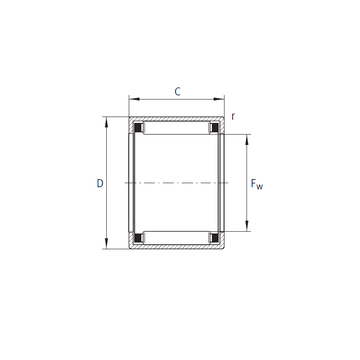 SCE5612 INA Needle Roller Bearings
SCE5612 INA Needle Roller Bearings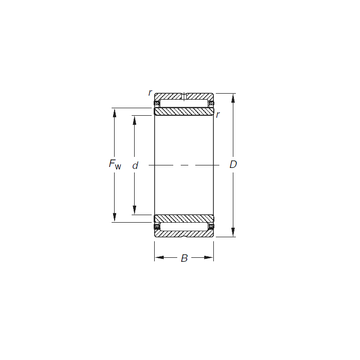 NKJ20/16 Timken Needle Roller Bearings
NKJ20/16 Timken Needle Roller Bearings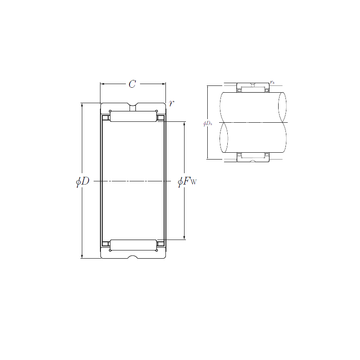 RNA4976 NTN Needle Roller Bearings
RNA4976 NTN Needle Roller Bearings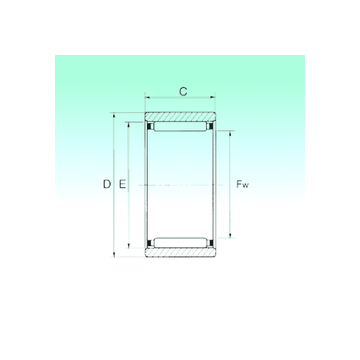 RNAO 35x47x16 NBS Needle Roller Bearings
RNAO 35x47x16 NBS Needle Roller Bearings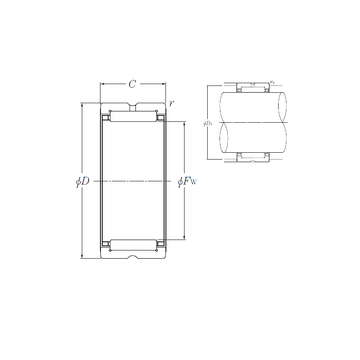 NK42/20R NTN Needle Roller Bearings
NK42/20R NTN Needle Roller Bearings